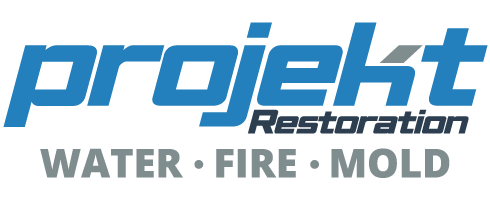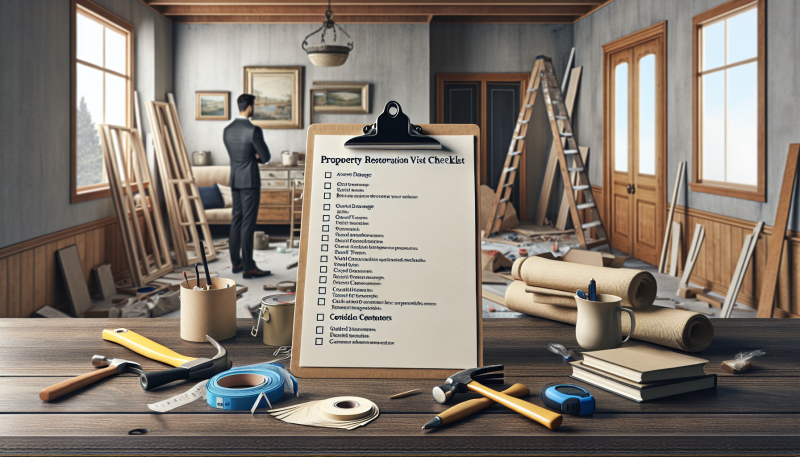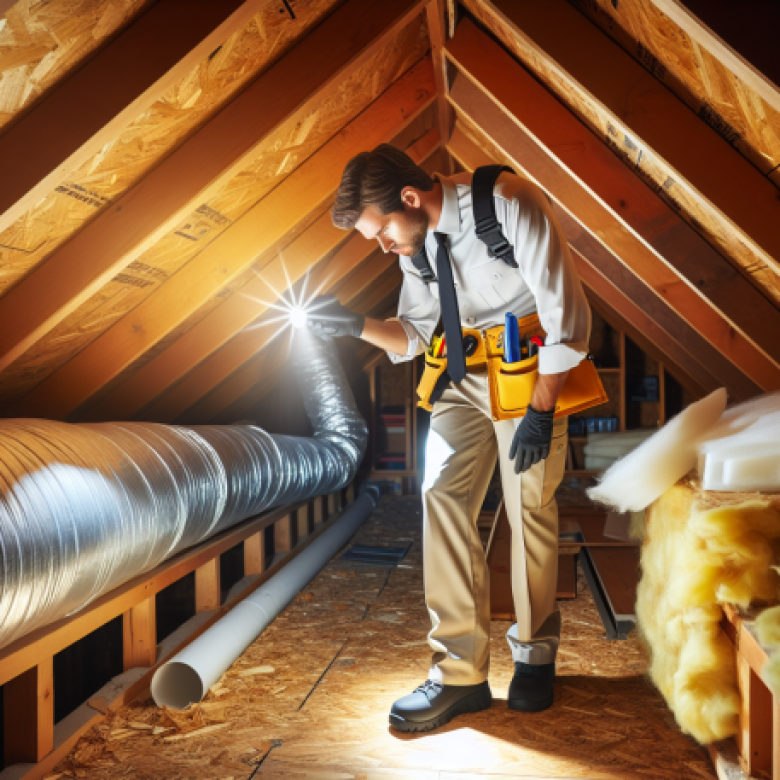is essential for anyone facing the aftermath of water, fire, or mold damage. Are you ready to restore your property to its former glory? Knowing what to expect and how to prepare can make a significant difference in the restoration process.
In this article, we will provide you with a comprehensive checklist to help you prepare for a property restoration visit. From gathering important documents to ensuring safe access for restoration professionals, these steps will streamline the process and minimize stress. By following this guide, you can take proactive measures to protect your property and facilitate a smoother restoration experience.
But this checklist is just the beginning. To truly understand how to navigate the complexities of property restoration, we’ll delve deeper into each step and share expert insights from industry leaders. So, let’s get started and equip you with the knowledge you need to tackle your property restoration effectively!
Understanding Property Restoration
Property restoration involves the process of repairing and revitalizing structures affected by damage. This process is crucial in various scenarios, such as water damage, fire incidents, and mold remediation. Each situation requires a tailored approach to restore the property to its original condition.
Different types of properties may need restoration services. Residential homes often face challenges from natural disasters or accidents. Commercial properties, too, can suffer significant damage, impacting business operations. Historical buildings require specialized restoration techniques to preserve their architectural integrity while addressing damage.
Common causes of property damage include severe weather events, plumbing failures, and electrical malfunctions. Additionally, neglect can lead to mold growth, necessitating professional mold removal services. Understanding these factors is essential for effective restoration. By recognizing the importance of timely intervention, property owners can mitigate further damage and ensure a safe environment.
Initial Assessment Before the Visit
Before the restoration team arrives, conducting a preliminary assessment of the property’s condition is crucial. Start by inspecting the structural integrity of the building. Look for any signs of sagging ceilings, cracks in the walls, or unstable foundations. Next, identify visible damage, such as water stains, mold growth, or fire damage. These indicators can help prioritize the restoration efforts.
Additionally, assess safety hazards. Check for exposed wires, slippery floors, or hazardous materials that could pose risks during the restoration process. Documenting the damage is essential for effective communication with the restoration team. Take clear photos of all affected areas, ensuring you capture different angles. Alongside the images, jot down detailed notes describing the extent of the damage.
This documentation will provide valuable insights for the restoration team, enabling them to devise a comprehensive plan. For further assistance, consider reaching out through our contact page or utilize our calculator for cost estimates. Proper preparation can significantly streamline the restoration process.
Creating a Restoration Plan
A clear restoration plan is essential for effective property recovery. It provides direction and minimizes confusion during a stressful time. Start by setting specific objectives. Determine what you want to achieve, whether it’s restoring a home after water damage or addressing mold issues. Next, establish a realistic timeline. This helps keep the restoration process on track and ensures timely completion.
Prioritizing tasks is crucial. Assess the severity and urgency of each issue. For instance, address structural damage or hazardous materials first, as these pose immediate risks. Then, focus on less critical tasks, such as cosmetic repairs. This methodical approach ensures that you tackle the most pressing problems first.
Additionally, consider involving professionals for complex issues. Their expertise can streamline the process and enhance safety. For more information on restoration services, check out our contact page or explore our calculator for estimating costs. By following these steps, you can create a comprehensive restoration plan that effectively addresses your property’s needs.
Gathering Necessary Documentation
Gathering the necessary documentation is crucial for a smooth property restoration visit. Start by collecting your insurance policies. Ensure you have both the current policy and any previous claims related to property damage. Next, gather records of past repairs. This includes invoices, receipts, and any correspondence with contractors.
Organize these documents in a folder or binder for easy access. Label each section clearly, so you can quickly find what you need during the visit. Consider creating a checklist of all documents to ensure nothing is overlooked.
When communicating with insurance companies, be clear and concise. Prepare a summary of the damages and the restoration work needed. This will help streamline the claims process. Additionally, keep a record of all conversations and correspondence. If you need assistance, consider reaching out through our contact page. For a detailed estimate of restoration costs, use our calculator. Being organized and proactive will facilitate a more efficient restoration experience.
Preparing the Property for Restoration
Before the restoration team arrives, complete several essential tasks to ensure a smooth process. First, clear the area of any furniture or personal items. This step allows the team to work efficiently without obstacles. Next, secure valuables in a safe location. This precaution protects your belongings from potential damage during restoration.
Safety is paramount for both residents and workers. Ensure that all electrical outlets are safe and that water sources are shut off if necessary. Additionally, mark any hazardous areas to prevent accidents. If you have pets, consider relocating them to a safe space away from the work zone.
Effective communication with tenants or occupants is crucial. Inform them about the restoration timeline and what to expect. Provide updates regularly to keep everyone in the loop. This transparency helps alleviate concerns and fosters cooperation. For more detailed guidance, check our contact page or explore our calculator for restoration costs. Proper preparation sets the stage for a successful restoration experience.
Choosing the Right Restoration Company
When selecting a restoration company, focus on key criteria. First, verify their certifications and licenses. A reputable company should have industry-standard certifications, ensuring they meet professional guidelines. Additionally, consider their experience. Companies with a proven track record in restoration services are often more reliable.
Next, read customer reviews. Positive feedback can indicate quality service, while negative reviews may raise red flags. Furthermore, obtaining multiple quotes is crucial. This process allows you to compare services and pricing. During consultations, ask about their methods, timelines, and warranties. This information helps you gauge their expertise and reliability.
Contracts and agreements play a vital role in the restoration process. They outline the scope of work, costs, and timelines. Ensure you understand all terms before signing. A clear contract protects both parties and sets expectations. For more information on restoration services, visit our contact page or explore our calculator for cost estimates. Understanding these aspects will lead you to a trustworthy restoration partner.
What to Expect During the Restoration Visit
During the restoration visit, the team will follow a structured process to ensure efficiency and effectiveness. Upon arrival, the project manager will assess the situation and outline the plan. This initial evaluation is crucial for determining the extent of the damage and the necessary steps for restoration. Technicians will then begin their work, focusing on specific tasks such as water extraction or mold remediation.
Each professional plays a vital role. The project manager oversees the entire operation, ensuring that timelines are met and communication flows smoothly. Technicians execute the hands-on work, utilizing specialized equipment to address the damage. Their expertise is essential for achieving optimal results.
Effective communication is key throughout the restoration process. Be clear about your concerns and ask questions whenever necessary. Regular updates from the project manager will keep you informed about progress and any changes to the plan. For more detailed information, consider visiting our contact page or using our calculator to estimate costs. This proactive approach will help ensure a successful restoration experience.
Post-Restoration Follow-Up
After the restoration is complete, conduct a thorough inspection of the property. Begin with a final walkthrough to ensure all work meets your expectations. Check for any remaining issues or areas that may need additional attention. Document the completed work meticulously. This documentation serves as a valuable reference for future maintenance and potential insurance claims.
Additionally, maintaining your property is crucial to prevent future damage. Regularly inspect areas prone to moisture, such as basements and bathrooms. Implement a routine cleaning schedule to keep surfaces dry and free from mold. Consider investing in a dehumidification system if humidity levels are consistently high.
Furthermore, ensure that gutters and downspouts are clear to direct water away from the foundation. Regular maintenance can save you from costly repairs down the line. For more information on how to protect your home, visit our contact page or use our calculator to estimate restoration costs.
Frequently Asked Questions (FAQs)
After property damage occurs, act quickly. First, ensure everyone’s safety. Then, document the damage with photos for your records. Contact your insurance provider to report the incident. They can guide you on the next steps.
The restoration process varies, but it typically takes a few days to several weeks. Factors include the extent of the damage and the type of restoration needed. For a more accurate estimate, consider using our calculator.
Insurance coverage can differ significantly. Review your policy to understand what is included. Many policies cover restoration costs, but confirm with your insurer to avoid surprises.
To prevent future damage, regularly inspect your property. Address leaks promptly and maintain your roof and gutters. Additionally, consider a mold assessment to identify potential issues.
When reviewing a restoration contract, look for clear terms and timelines. Ensure it outlines the scope of work and payment details. A reputable company will provide transparency and address your concerns. For more information, reach out through our contact page.
Conclusion
Preparing for a property restoration visit requires careful planning and attention to detail. First, gather all necessary documents, including insurance information and photographs of the damage. Next, create a list of items that require special handling. This proactive approach ensures a smoother restoration process.
Additionally, communicate clearly with your restoration team. Share your concerns and expectations. This dialogue fosters a collaborative environment, making it easier to address any issues that arise. Remember, the sooner you act, the quicker your property can return to its original state.
Finally, don’t hesitate to seek professional help. Contact a restoration expert for guidance tailored to your situation. They can provide valuable insights and support throughout the process. For more information, visit our contact page or explore our calculator for estimating costs. Taking these steps will help you navigate the restoration journey effectively.





